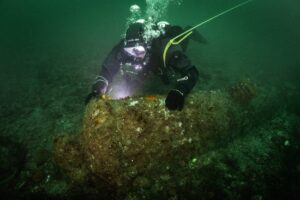I head to Grand Cayman most years because it serves up such classic underwater delights: reliably excellent visibility, warm water, benign sea conditions and beautiful dive sites. This high level of consistency makes it perfect for teaching underwater photography, and I am usually accompanied by groups of photographers keen to develop their skills.
While the diving is familiar, the dive experience constantly evolves. Cayman has always been an innovator in the industry, ever since Bob Soto opened his recreational dive centre in 1957 and started the overseas dive trip. Ever since, diving has been a core business, with dive shops keen to adopt and often set the latest trends, something that keeps the customer experience cutting-edge. For example, for many years I dived on nitrox in Grand Cayman when it just wasn’t available anywhere else on my travels, and very sparsely even at home in the UK. Today, there is excellent support for technical and rebreather diving, and plenty of options for professional freediving courses. Many people come here to train, with courses running from open water right up to instructor and technical specialities. Dive centres continue to innovate.
A great example of the reinvestment and reinvention of Cayman diving is the Kittiwake wreck. The USS Kittiwake is an ex-submarine rescue vessel and is the only US navy ship that has been sunk outside American waters as an artificial reef. She’s the perfect length for a dive, yet her interesting interior provides more than enough entertainment for many dives of exploration. She’s quickly become a hugely popular dive attraction and is maturing nicely. Now she’s tipped over next to the reef, she feels like a real wreck, and the shady areas are adorned with colourful sponges.
January is one of the coolest month’s to visit Cayman, but it is still totally tropical. I used my Flexa 3.2.2 suit and Flexa Hood, mainly for sun protection. I used my SXS 62X regulator and my Magellan BC, both of which are high performance but light, making them very travel-friendly. I also used my customary X-Vision mask and Volo fins.
Ideally, when shooting other divers, I like to dress them in current Mares gear. Not only is it nice to dive with, but it looks great too. When all the gear is from the same manufacturer and of the same age, it tends to match in colour and design style. In general, diving publications want to see divers in current diving gear, rather than in some 1960s oval face mask, but when travelling on my own, I don’t have the baggage allowance to take full gear for a model to wear. That is where Mares Photosuits are so valuable, because they are easy fit into your luggage and cover up the Dive Guide’s tatty wetsuit, making them look much neater in my photos. I usually pack a couple of matching masks which are useful for me and my workshop guests.
Anyway, back on topic, it is this constant evolution that keeps me coming back to Cayman. While the DNA of clear, blue water, dramatic walls and plentiful marine life endures thanks to the innovation of the island’s dive industry, the Grand Cayman diving experience remains as fresh as ever, and is ideal for great underwater photography.
The post Caymaniac appeared first on Mares – Scuba Diving Blog.
Read MoreDiving, diving, Grand Cayman, Mares, ocean, photography, underwaterMares – Scuba Diving Blog

